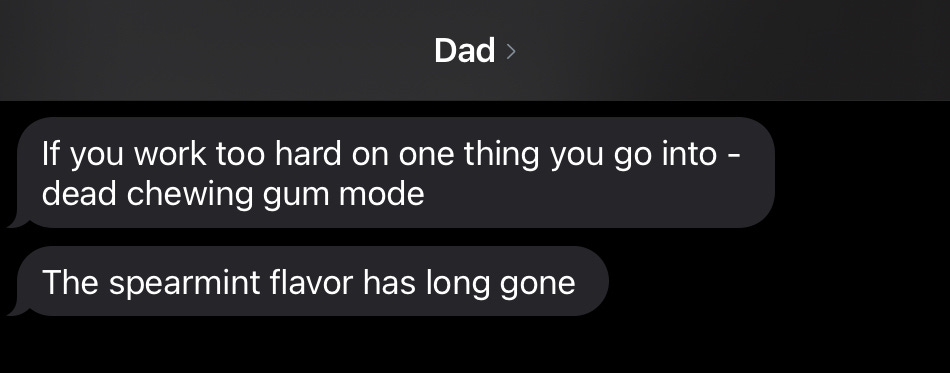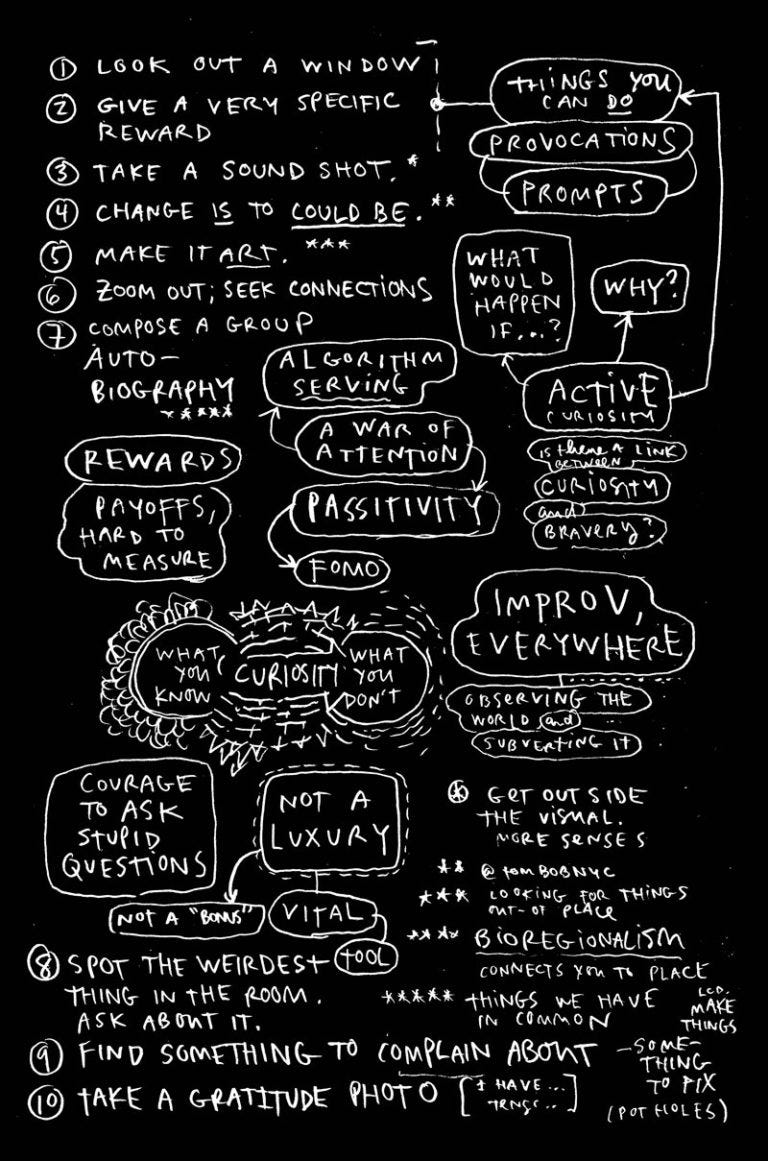STRATSCRAPS v76
Half Baked Thoughts
Do we serve our client’s interests or the brands?
In theory it’s so simple…
Hubbard has developed for analyzing and making any decision, which he calls Applied Information Economics. The basic steps of AIE are as follows:
Define a decision problem and relevant uncertainties
Determine what you know now
Compute the value of additional information
Apply measurement instruments to high-value measurements
Repeat steps 3 and 4 until the value of additional information drops to zero
Make decision and act on it.
“Strategy is Memory
Apparently only 30% of employees can correctly identify their company’s strategy (source). To bastardize a William Gibson quote:
The strategy is already here - it’s just not evenly distributed.
Why is that? One reason is that strategy is often set by one group of people, but needs to be recalled by another. Strategy is memory. (full article)”
☝︎ When the CD lets a strategist sit in a creative work session as a “fly on the wall”
A creative idea that will never be bought:
With zero budget, a brand could leave as much evidence of itself behind on as many unexpected platforms as possible. Let’s say the brand was a spirits brand. Leave yelp reviews on places that feel on brand, record an audio book of bartender stories, start a kickstarter for something the team actually wants to fund. Comment on YouTube videos, start a blog, leave rotten tomato reviews, rate and review amazon products.
In short, show up all the places where brands don’t typically appear. Act like a person. This is what organic social could be. Leave a digital footprint in as many places as possible. And the more strange/odd the content, the more effective it will be.
There. There’s a free idea for a brand with no media budget and a lot of time.
Shout out to Chris Smith and his thoughtful reply to my rant about PR last week. A productive conversation followed.
YARRR.
Next time I’ve got access to a large format printer, this feels worth printing.
The first step is to measure whatever can be easily measured. This is OK as far as it goes. The second step is to disregard that which can't be easily measured or to give it an arbitrary quantitative value. This is artificial and misleading. The third step is to presume that what can't be measured easily really isn't important. This is blindness. The fourth step is to say that what can't be easily measured really doesn't exist. This is suicide. - Daniel Yankelovich, "Corporate Priorities: A continuing study of the new demands on business" (1972).
From a parenting IG account:
I’m not equating clients to children. Agencies are the children in this analogy and we need to push the relationship with our caregiver (clients) to be based on respect rather than obedience.
WEEKLY MONSTER
From some work I did that will be showing up elsewhere in the strategy corner of the internet soon.












